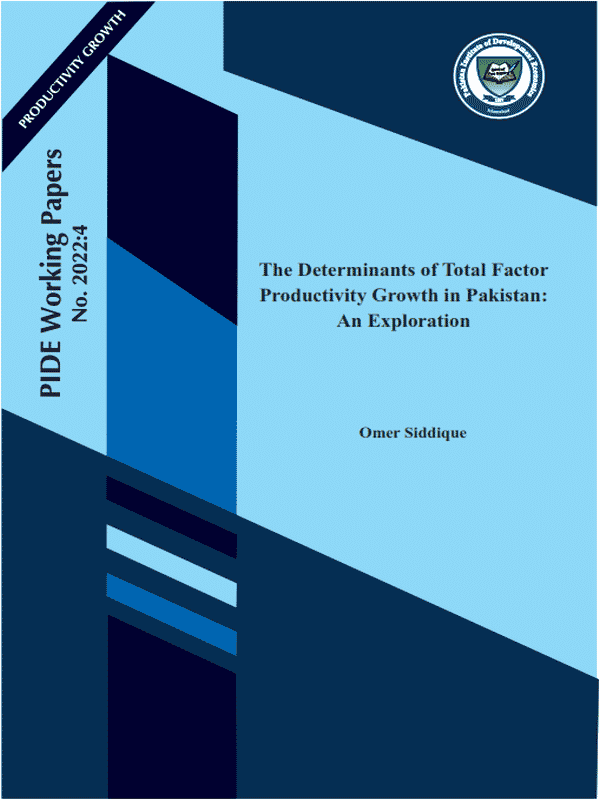The Determinants of Total Factor Productivity Growth in Pakistan: An Exploration
1. MOTIVATION
Total factor productivity (TFP), also known as multifactor productivity, is that part of the GDP that cannot be attributed to factor inputs, including labour, capital, human capital, and materials. TFP essentially tells us how productively economies use factor inputs. Some economies produce more output with the same inputs, while others produce less. Therefore, an increase in TFP growth is essential for long-run sustained growth. Economic theory and evidence also point in the same direction.
One can also judge the importance of TFP from Warren Buffet’s quote that it is the “secret sauce” in the U.S. economic success story over the last 150 years (Lambert, 2016). Empirical evidence shows that the economies with higher TFP growth have grown at a higher rate for a sustained period (for example, China). On the other hand, the countries that grew on the back of factor accumulation could not sustain higher growth for an extended period (for example, the Soviet Union). Citi GPS (2018) shows that in 60 percent of the cases, the economies with TFP growth of more than 3 percent grew at 8 percent or more. However, in 66 percent of cases, TFP growth of 2-3 percent was associated with GDP growth between 3 and 7 percent.
In Pakistan, although there have been periods when both TFP and GDP growth increased, on average, as shown by the trend lines in Figure 1, both TFP and GDP growth are declining. The figure shows that TFP and GDP growth move together, i.e., when TFP growth increases, GDP growth also increases and vice versa. According to Siddique (2020), in Pakistan, whenever there have been episodes of liberalisation and market friendly policies, the TFP growth has increased, leading, consequently, to improved economic performance. For example, in the 2000s, TFP and GDP growth took place due to better macroeconomic fundamentals, structural reforms, institutions, governance, and private sector dynamism. Certain structural reforms were undertaken, i.e., financial sector restructuring, privatisation, liberalisation, deregulation of the economy, and bank reforms leading towards a market-led economy. A privatisation process was also pursued; the focus was on banking, telecommunication, oil and gas, and the energy sector.





